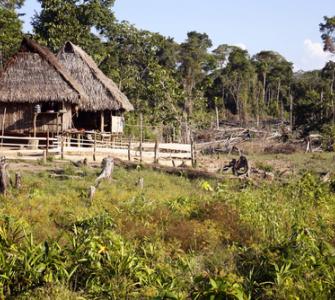International climate change discussions have identified the use of economic incentives as an important means to reduce deforestation. Governments in the Amazon Andes have created or are in the process of creating incentive mechanisms to pursue this goal, frequently alongside other complementary development and conservation objectives. In order to be most effective, one of the key pieces of information that these mechanisms need is the opportunity cost of conservation. Unfortunately, this data is remarkably scarce in the region.
CSF has carried out site-specific analyses of opportunity costs based on field surveys in Bolivia, Ecuador, Colombia and Peru. These past projects have produced a database of over one thousand observations regarding land-use practices of different agents throughout the region. An in-depth analysis and comparison of the database would help closing the opportunity costs information gap in the region and contribute to a greater efficiency of current and future conservation mechanisms.
CSF, with support from the MacArthur Foundation, will carry out an econometric analysis of the opportunity cost database. Profitability of agricultural activities will be used to approximate the opportunity cost of conservation, and this last will be a function of physical characteristics, like slope and proximity to roads, and socio-economic characteristics of rural agents, like education and size of property. By identifying the specific features of agents that live in deforestation prone areas, we will be able to inform incentives agencies about the segment of population that would be most likely to sign a contract and at the same time contribute to an actual reduction in deforestation.

